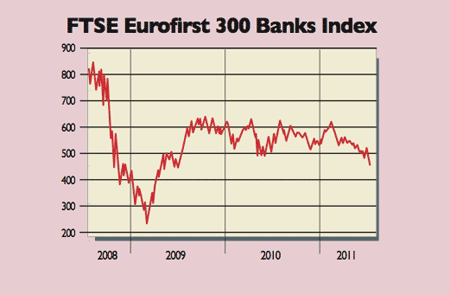
“If the European banking system was looking for a cathartic moment, this wasn’t it,” says Simon Nixon in The Wall Street Journal. Last Friday, after the markets closed, the European Banking Authority (EBA) released the results of this year’s stress tests of European banks. Last year’s tests had proved farcical, with Irish banks given a clean bill of health shortly before they went bust.
Monday’s market reaction showed that, once again, “the stress tests failed their own stress test”, as the Independent puts it. Banking stocks tanked amid a general flight to safety, with the pan-European FTSE Eurofirst 300 Banks index slumping to a two-year low. Only eight banks of the 90 tested needed to raise more capital to bolster their balance sheets to healthy levels, according to the EBA, which says that they needed a total of just €2.5bn.
The failure rate was far lower than expected, while the adverse macroeconomic scenarios in the test were “not that adverse”, said Standard Chartered. But the main reason markets were far from reassured was that the tests didn’t include a eurozone sovereign default – even though a Greek one now looks inevitable. It’s absurd that a stress test, “which is supposed to imagine the improbable, cannot even countenance the probable”, says Patrick Jenkins in the FT.
On the plus side, the stress tests made a lot of data available, allowing analysts to formulate their own stress tests, “in some cases to terrifying effect”, says Ian King in The Times. Applying a slightly stricter minimum capital level than the official stress tests, Morgan Stanley reckoned that the banks would need up to €64bn of capital – and RBS a further €5bn – if Portuguese, Irish and Greek debt were marked to current market prices.
But this isn’t just about sovereign debt, as Nixon points out. European banks have lent huge sums to the private sector in the struggling peripheral economies. French banks are among the most exposed, with €300bn of loans to institutions and individuals in the five most vulnerable southern states.
The stress tests also couldn’t address the unpredictable impact of a default on investors’ confidence and interbank funding, which are key features of a banking crisis. The danger is that with the euro crisis threatening to spin out of control, the real bank stress test is yet to come, says Peer Thal Larson on Breakingviews.